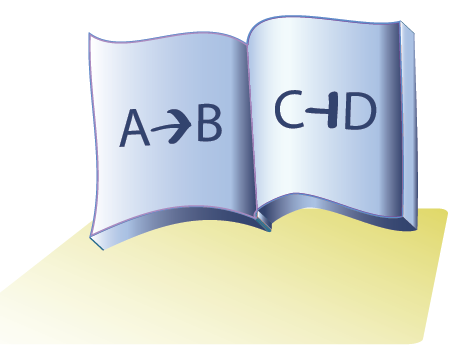Formalizing biological knowledge about molecular mechanisms involved in cancer

The knowledge about molecular signaling mechanisms is dispersed in thousands of publications, precluding application of methods and algorithms developed in the field of bioinformatics and systems biology. Formalizing this knowledge is one of the major missions of systems biology today. With this aim we created the Atlas of Cancer Signaling Network resource (ACSN). ACSN depicts signaling pathways frequently implicated in cancer, including multiple crosstalk and regulatory circuits between molecular processes. The content of ACSN is represented as a seamless geographic-like map browsable by the Google Maps engine and semantic zooming. The associated blog provides a forum for commenting and curating the ACSN maps (Kuperstein et al, Oncogenesis, 2015). These features are supported by NaviCell, an interactive web-based environment for navigation, curation and data visualization (Bonnet et al, NAR, 2015; Kuperstein et al, BMC SysBio, 2013).
In order to make the constructed atlas useful tool, we develop appropriate methods for data analysis in the context of biological maps. The integrated NaviCell web-based tool box in the ACSN resource, allows importing and visualizing heterogeneous omics data on top of the ACSN maps and to perform functional analysis of the maps (Bonnet et al, NAR, 2015). NaviCom tool can automatically generate ACSN-based molecular portraits of cancer using multi-level omics data from cancer data resources as cBioPortal (Dorel et al, Database (Oxford), 2017).
These tools are provided as a user-friendly platform accessible for end users and non-computational biologists and clinicians which facilitates formulating scientific hypotheses from data and helps decision-making regarding the diagnosis and the treatment schemes for patients.
The clinical implication of knowledge formalization and data analysis activity of the team is to reveal specific mechanisms deregulated in each patient, accordingly to this, to stratify patients and to suggest personalized treatment (Dorel et al, 2015).
Highlights

Dorel M, Viara E, Barillot E, Zinovyev A and Kuperstein I NaviCom: a web application to create interactive molecular network portraits using multi-level omics data. Database (Oxford), 2017, 1-11.
January 2017 | NaviCom publication

Kuperstein I, Bonnet E, Nguyen HA, Cohen D, Viara E, Grieco L, Fourquet S, Calzone L, Russo C, Kondratova M, Dutreix M, Barillot E, Zinovyev A. Atlas of Cancer Signalling Network: a systems biology resource for integrative analysis of cancer data with Google Maps. Oncogenesis. 2015. 4:e160.
July 20, 2015 | ACSN Reference publication

Kuperstein I, Grieco L, Cohen DP, Thieffry D, Zinovyev A, Barillot E. The shortest path is not the one you know: application of biological network resources in precision oncology research. 2015. Mutagenesis 30(2):191-204.
January 2015 | Review on using pathways in personalized medicine

Dorel M, Barillot E, Zinovyev A, Kuperstein I.Network-based approaches for drug response prediction and targeted therapy development in cancer. 2015. Biochem Biophys Res Commun. 464(2):386-91.
June 2015|

Chanrion M, Kuperstein I, Barriè re C, El Marjou F, Cohen D, Vignjevic D, Stimmer L, Paul-Gilloteaux P, Biè che I, Tavares Sdos R, Boccia GF, Cacheux W, Meseure D, Fre S, Martignetti L, Legoix-Né P, Girard E, Fetler L, Barillot E, Louvard D, Zinovyev A, Robine S. Concomitant Notch activation and p53 deletion trigger epithelial-to-mesenchymal transition and metastasis in mouse gut. 2014. Nat Commun. 5:5005.
October 2014 | Formalizing knowledge led to a prediction

Barillot E., Calzone L., Hupe P., Vert J.-P., Zinovyev A. Computational Systems Biology of Cancer Chapman & Hall, CRC Mathematical & Computational Biology, 2012, 452 p.
August 2012 | Book written from the team experience

Calzone L., Gelay A., Zinovyev A., Radvanyi F., Barillot E.A comprehensive modular map of molecular interactions in RB/E2F pathway 2008. Molecular Systems Biology 4:174 doi:10.1038/msb.2008.7
January 2008 | First comprehensive map publication by the team